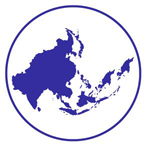Presentation Title
Absent Presence: Li Yu’s Drama Wanli yuan and Early Qing Sartorial Politics
Location
Council Chambers
Start Date
12-10-2013 9:00 AM
End Date
12-10-2013 10:45 AM
Abstract
Li Yu’s 李玉 Wanli yuan 萬里圓 (Thousand-li Reunion) is one of the few dramas in the early Qing period that directly addresses the topic of the Ming-Qing transition. Although Wanli yuan was never published in its entirety during the Qing Dynasty, its popular scenes circulated widely on stage, resulting in a series of “performance editions.” Oriented toward stage performance, most of Li Yu’s plays include detailed costume instruction. By contrast, almost none of the extant editions of Wanli yuan includes any costume instruction. Despite this absence, the dialogues and stage directions of the extant performance editions show that different scenes of the drama confront the issue of clothing in sharply different ways. Scenes with an ethical theme adopt Han clothing, whereas scenes of an ethnic theme smuggle in Manchu hairstyle and clothing, suggesting the use of the queue and magua 馬褂 (horse jacket). These two types of scenes circulated through different channels and for different audiences in early Qing society. Through a case study of Wanli yuan, this paper reveals how early Qing dramas interacted with/against the Manchu government’s sartorial regulations, in particular how varying contexts of performance facilitated these sartorial negotiations.
Absent Presence: Li Yu’s Drama Wanli yuan and Early Qing Sartorial Politics
Council Chambers
Li Yu’s 李玉 Wanli yuan 萬里圓 (Thousand-li Reunion) is one of the few dramas in the early Qing period that directly addresses the topic of the Ming-Qing transition. Although Wanli yuan was never published in its entirety during the Qing Dynasty, its popular scenes circulated widely on stage, resulting in a series of “performance editions.” Oriented toward stage performance, most of Li Yu’s plays include detailed costume instruction. By contrast, almost none of the extant editions of Wanli yuan includes any costume instruction. Despite this absence, the dialogues and stage directions of the extant performance editions show that different scenes of the drama confront the issue of clothing in sharply different ways. Scenes with an ethical theme adopt Han clothing, whereas scenes of an ethnic theme smuggle in Manchu hairstyle and clothing, suggesting the use of the queue and magua 馬褂 (horse jacket). These two types of scenes circulated through different channels and for different audiences in early Qing society. Through a case study of Wanli yuan, this paper reveals how early Qing dramas interacted with/against the Manchu government’s sartorial regulations, in particular how varying contexts of performance facilitated these sartorial negotiations.

Comments
Presentation is included in Panel 11: Performance, Literature, and Education in late Imperial China